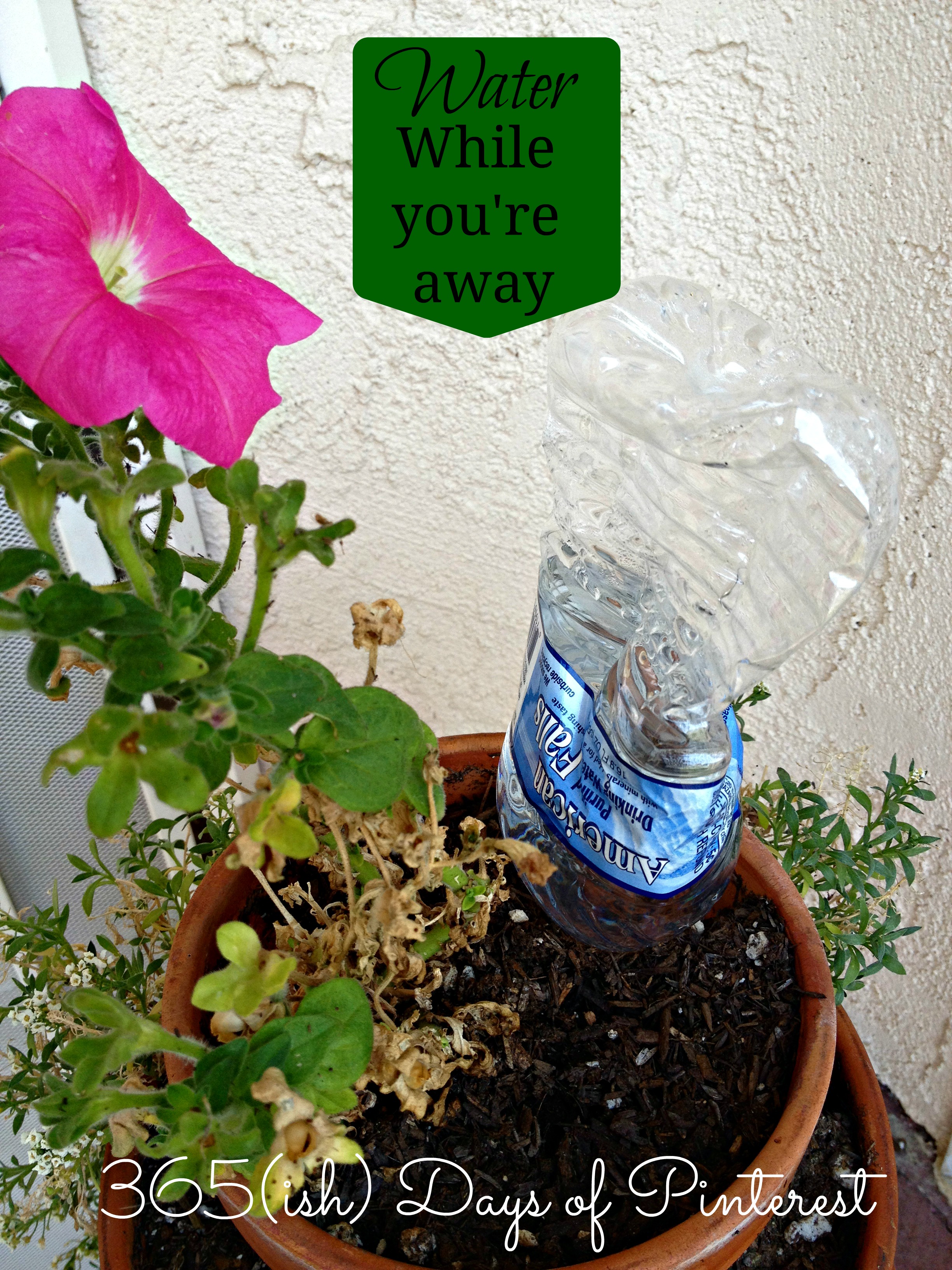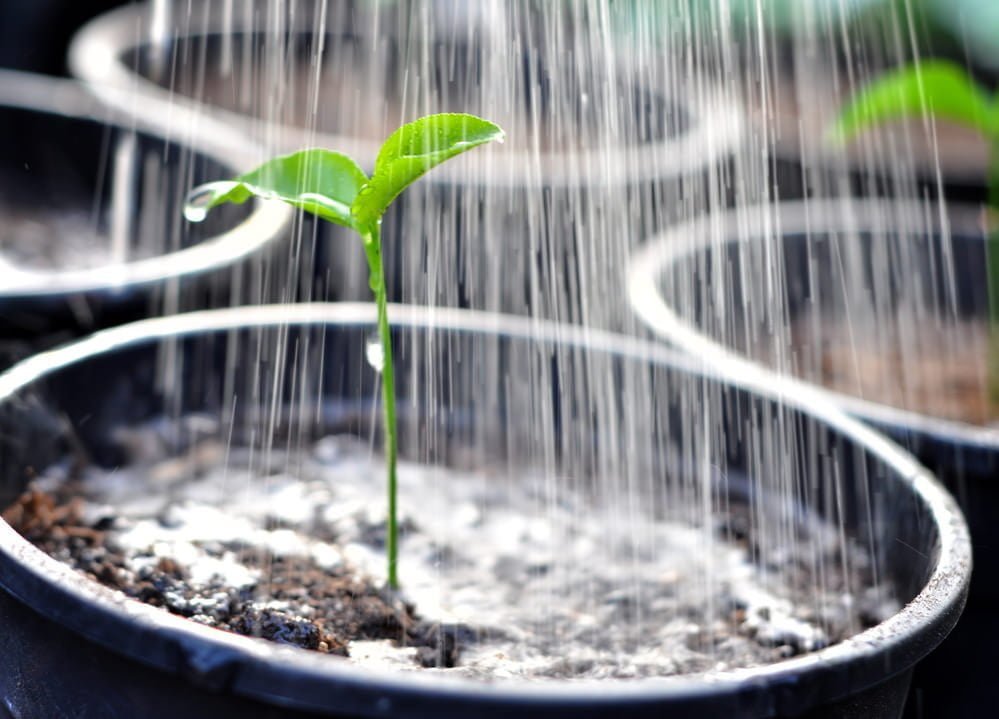As an Amazon Associate, I earn from qualifying purchases.
Use self-watering containers or enlist a neighbor to water your plants. Set up a drip irrigation system as an alternative.
Planning to leave for two weeks and worried about your outdoor plants? Keeping your plants hydrated during your absence is crucial for their survival and growth. Several methods can help ensure your plants remain well-watered. Self-watering containers are efficient and require minimal effort.
Setting up a drip irrigation system can automate the process, providing a consistent water supply. If you prefer a more personal touch, asking a neighbor to help can be a great solution. Each of these methods ensures your plants get the care they need, allowing you to enjoy your time away without worry.
Planning Ahead
Going away for two weeks can be stressful if you have outdoor plants. It’s important to plan ahead to ensure your plants stay healthy. This section will guide you on how to prepare your plants for your absence.
Assessing Plant Needs
First, understand the needs of your plants. Different plants need different care. Here are some tips:
- Check soil moisture: Some plants like dry soil, others need it moist.
- Know light requirements: Some plants need full sun, others prefer shade.
- Watering frequency: Some plants need daily watering, others can go days without.
Make a list of your plants and their needs. This will help you plan better.
Weather Considerations
The weather can affect your plants’ water needs. Check the forecast before you leave.
| Weather Condition | Watering Needs |
|---|---|
| Hot and Dry | Water more often. |
| Cool and Wet | Water less often. |
| Mixed Weather | Adjust as needed. |
If rain is expected, your plants might need less water. If it’s hot, they will need more.
Using Self-watering Systems
Going away for two weeks can make watering outdoor plants tricky. Using self-watering systems is a great solution. These systems ensure your plants stay hydrated. They work automatically, so you don’t need to worry.
Drip Irrigation
Drip irrigation is a popular self-watering system. It delivers water directly to the plant roots. This method reduces water waste and ensures even watering.
Setting up a drip irrigation system is simple. Follow these steps:
- Lay out the main hose around your garden.
- Attach drip emitters to the main hose.
- Place the emitters near the base of each plant.
- Connect the hose to a water source.
- Use a timer to automate watering schedules.
Drip irrigation is efficient and saves water. Your plants will thrive while you are away.
Self-watering Planters
Self-watering planters are another excellent option. These planters have a built-in water reservoir. The reservoir supplies water to the plants as needed.
Benefits of self-watering planters include:
- Consistent moisture levels
- Reduced watering frequency
- Healthy root growth
Using self-watering planters is easy. Here’s how:
- Fill the reservoir with water.
- Ensure the soil is moist before leaving.
- Check water levels before you go.
- Top off the reservoir if needed.
Self-watering planters are perfect for busy people. They keep your plants healthy with minimal effort.
Employing Watering Stakes
Watering stakes are a simple way to keep your plants hydrated. They deliver water directly to the roots. This method is efficient and easy to install. It’s perfect for when you are away.
Choosing The Right Stakes
Not all watering stakes are the same. Choose stakes based on your plant’s needs. Consider the size and material. Ceramic stakes work well for most plants. Plastic stakes are more affordable.
| Type | Material | Best For |
|---|---|---|
| Ceramic Stakes | Ceramic | Most Plants |
| Plastic Stakes | Plastic | Budget-Friendly |
Installation Tips
Install your watering stakes correctly for best results. Follow these steps:
- Soak the stakes in water for a few minutes.
- Insert the stakes into the soil near the plant’s roots.
- Attach a water source like a bottle or hose.
Check the stakes regularly to ensure water flow. Adjust as needed for optimal hydration.
- Step 1: Soak the stakes.
- Step 2: Insert into the soil.
- Step 3: Attach a water source.
Watering stakes are a great way to keep plants healthy. They are easy to use and very effective.

Credit: simpleandseasonal.com
Leveraging Mulch
Heading out for a vacation and worried about your outdoor plants? One effective way to keep your plants hydrated is by leveraging mulch. Mulch helps retain moisture, keeps soil cool, and prevents weeds. This method is both simple and highly effective.
Types Of Mulch
Different types of mulch can be used based on availability and plant type. Here are some common types:
- Organic Mulch: Includes wood chips, straw, and grass clippings.
- Inorganic Mulch: Includes gravel, stones, and plastic sheeting.
- Living Mulch: Ground covers like clover and creeping thyme.
| Type of Mulch | Benefits |
|---|---|
| Wood Chips | Decompose slowly and enrich soil |
| Straw | Lightweight and easy to spread |
| Gravel | Excellent for drainage and weed control |
Application Techniques
Proper application ensures your mulch works effectively. Follow these steps:
- Clear the area of weeds and debris.
- Water the soil thoroughly before applying mulch.
- Spread a 2-3 inch layer of mulch evenly around plants.
- Avoid piling mulch against the plant stems.
Mulching is a simple way to maintain plant health. Use it to keep your garden vibrant while you’re away.
Setting Up A Timer
Going away for 2 weeks? Worried about your outdoor plants? Setting up a timer ensures they get the right amount of water. It’s easy and effective. Let’s dive into the steps to keep your garden thriving.
Choosing A Timer
Selecting the right timer is essential. Look for weather-resistant timers. This ensures durability. Choose a timer with multiple settings. This allows flexibility in watering schedules. Some timers even have rain sensors. This feature prevents overwatering. Below is a table of recommended timers:
| Timer Model | Features | Price Range |
|---|---|---|
| Timer A | Weather-resistant, Multiple Settings, Rain Sensor | $30-$50 |
| Timer B | Digital Display, Battery Operated, Easy Programming | $20-$40 |
| Timer C | Solar Powered, Durable, Simple Interface | $40-$60 |
Programming The Schedule
Once you have your timer, it’s time to program the schedule. Follow these steps:
- Attach the timer to your water source.
- Set the current time on the timer.
- Choose the days you want to water.
- Set the start time for watering.
- Select the duration for each watering session.
Consider your plants’ needs. For example, water early in the morning. This reduces evaporation. Check your timer’s manual for specific instructions. Each model might vary slightly.
Here are some general tips:
- Water deeply but infrequently.
- Avoid watering during the hottest part of the day.
- Check soil moisture levels regularly.
Programming your timer correctly ensures your plants stay healthy while you’re away. Enjoy your trip knowing your garden is well cared for.
:max_bytes(150000):strip_icc()/watering-plants-while-on-vacation-1402425_05-bd8e28b6dd8f4b1089c0533ed03e5978.jpg)
Credit: www.thespruce.com
Neighborly Help
Asking a neighbor to water your plants is a great option. A trusted neighbor can help keep your plants alive while you are away. It’s a good way to build community and ensure your garden stays green.
Finding A Plant Sitter
Choose a neighbor who loves plants. You can also ask a friend who lives nearby. Look for someone who will be home when you are away. Make sure they agree to help and have the time to do it.
Providing Instructions
Write clear instructions for your plant sitter. Include details on how much water each plant needs. You can use a table to make it easy:
| Plant Name | Watering Frequency | Amount of Water |
|---|---|---|
| Rose | Every 2 days | 1 liter |
| Tomato | Every day | 500 ml |
| Fern | Every 3 days | 250 ml |
Use bullet points for quick tips:
- Water in the morning.
- Avoid watering leaves.
- Check soil moisture before watering.
Leave any necessary tools like a watering can. Show them where to find the tools and water source. Walk them through your garden once before you leave.
Using Water Retention Gels
Keeping your outdoor plants hydrated while away can be tricky. One effective solution is using water retention gels. These gels help ensure plants get water consistently, even if you can’t be there.
How They Work
Water retention gels absorb water and release it slowly. This process helps keep the soil moist for a longer time. The gels are made from special polymers that swell up when wet.
Once in the soil, they act like tiny water reservoirs. They release moisture gradually, helping plants stay hydrated. This method is ideal for periods of up to two weeks.
Best Practices
Using water retention gels correctly is essential. Follow these tips for best results:
- Mix the gel into the soil before you leave.
- Use the recommended amount based on plant size.
- Water the plants well after adding the gels.
- Avoid overwatering as it can cause root rot.
Here is a quick reference table for the amount of gel to use:
| Plant Size | Amount of Gel |
|---|---|
| Small Plants (up to 1 foot) | 1 teaspoon |
| Medium Plants (1-3 feet) | 1-2 tablespoons |
| Large Plants (over 3 feet) | 1/4 cup |
Water retention gels are a simple yet effective way to care for your plants. With these tips, your plants will stay healthy and hydrated.
Grouping Plants Together
Ensuring your outdoor plants thrive while you’re away can be challenging. One effective method is grouping plants together. This simple strategy helps maintain moisture and provides a micro-environment beneficial for plant health.
Benefits Of Grouping
Grouping plants together can significantly enhance their chances of survival. Here are some key benefits:
- Moisture Retention: Plants grouped closely create a humid microclimate. This reduces water loss.
- Shade Provision: Taller plants can provide shade to smaller ones. This helps prevent excessive evaporation.
- Ease of Watering: Watering a cluster of plants is simpler than scattered ones.
Optimal Arrangements
Arranging your plants correctly can further optimize their health. Consider these tips for the best results:
- Group by Water Needs: Place plants with similar water needs together.
- Consider Sunlight Requirements: Ensure each plant gets the right amount of sunlight.
- Use Planters: Group plants in large planters to retain moisture.
To better understand the optimal arrangements, refer to the table below:
| Plant Type | Water Needs | Sunlight Requirements |
|---|---|---|
| Succulents | Low | Full Sun |
| Ferns | High | Partial Shade |
| Herbs | Medium | Full Sun |

Credit: millcreekgardens.com
Frequently Asked Questions
How Can I Water Plants While On Vacation?
To water plants while on vacation, use self-watering devices. Options include drip irrigation systems, water globes, or DIY wicking systems. These methods ensure consistent moisture.
Are Self-watering Systems Effective For 2 Weeks?
Yes, self-watering systems are effective for 2 weeks. They provide consistent moisture. Choose from options like drip irrigation or water globes.
Can I Use A Neighbor To Water My Plants?
Yes, asking a neighbor to water your plants is effective. Provide clear instructions. This ensures your plants receive proper care.
What Is The Best Self-watering Method?
The best self-watering method depends on your plants. Drip irrigation is versatile. Water globes are great for smaller plants.
Conclusion
Ensuring your outdoor plants stay hydrated while you’re away is simple with proper planning. Use self-watering systems, mulch, and enlist help. These methods keep plants healthy and thriving during your absence. With these tips, you can enjoy your time away without worrying about your garden.
Happy travels and happy gardening!

